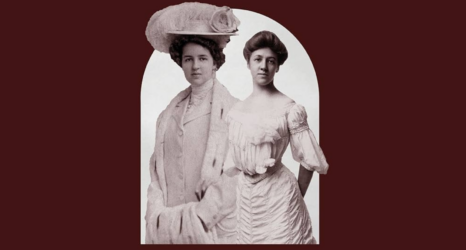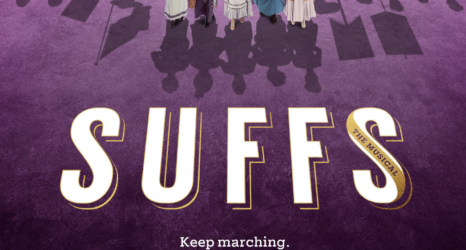March 9, 1910: More proof of a revitalized suffrage movement was evident in Albany today at the New York State legislature‘s hearings on changing the state constitution to enfranchise women. Today’s unprecedented turnout encouraged suffragists to believe that they can succeed in striking one word from the section that grants voting rights only to the Empire State’s “male” citizens.
That feeling of optimism was encouraged by Assemblymember Frederick R. Toombs, who told activists that there was much more support for woman suffrage in the legislature this year than ever before. The hearing room was so packed today that many speakers were unable to move, and delivered their arguments from wherever they happened to wind up sitting or standing.
Though committee members had reserved seats, they were surrounded by advocates on both sides of the issue who had come here from all around the state. Many arrived on a special train this morning, but others have been busy lobbying for several days. Mary Garrett Hay was in charge of the suffragists and Mrs. George Phillips the anti-suffragists. Those in support of suffrage could be easily distinguished by their big yellow “Votes for Women” buttons.
The “antis” stated their case first, and in their usual manner presented themselves as protectors of women, the home and society. According to Mrs. Francis M. Scott,
Were we so presumptuous as to think we could take up men’s work we should have to take it up in addition to our own, and while the Legislature might make us voters it could not make you men mothers.
She brought forth a desired laugh on that note, and then on a more serious note warned:
Women, if they become voters, will succumb to the nerve-racking brain strain, and it will have decidedly bad effects. The birth rate has been lowered in those countries where the restlessness of women has taken the most acute form. We whose unique responsibility is to furnish the State with citizens have a right to demand protection from these dangers which threaten the mother instinct.
After numerous other speeches along the same lines, it was the pro-suffrage side’s turn. Samuel Untermeyer noted that,
Women are eligible with men for the electric chair, the prison and the tax roll. It seems intolerable that they should be ineligible for the ballot, the jury box and to have their part in framing the laws under which they are required to live.
He then went on to refute the myth that women have equal rights already, using the plight of wives as one example. In divorces, he said,
The almost barbarous inadequacy of the allowances made by the court in such cases are a recognized evil in our profession.
Even widows are afflicted by the present statutes, as:
The law seems to proceed on the utterly intolerable and indefensible theory that the wife has no interest in the property accumulated during marriage. … The law does not give to the wife as a right any part of the husband’s estate in case of his death unless he happens to own land. He can leave her penniless if he sees fit.
Anna Etz spoke for many when she said women are tired of having to use indirect influence on the political system, and Carrie Chapman Catt appealed to the legislators not to let New York be left behind in the rush to democracy around the world.
One-fifteenth of the world’s area now has some form of woman suffrage, and the gains over the past decade have been more substantial than those in the previous five. Whether this is the year that the state will join Wyoming, Colorado, Idaho and Utah, and the nations of New Zealand and Finland, in assuring full and equal suffrage to women is uncertain. That the suffragists stated their case well today, and are determined to do so for as long as may be necessary to achieve their goal, is in absolutely no doubt.
Photo of Carrie Chapman Catt from Wikimedia Commons, public domain.





